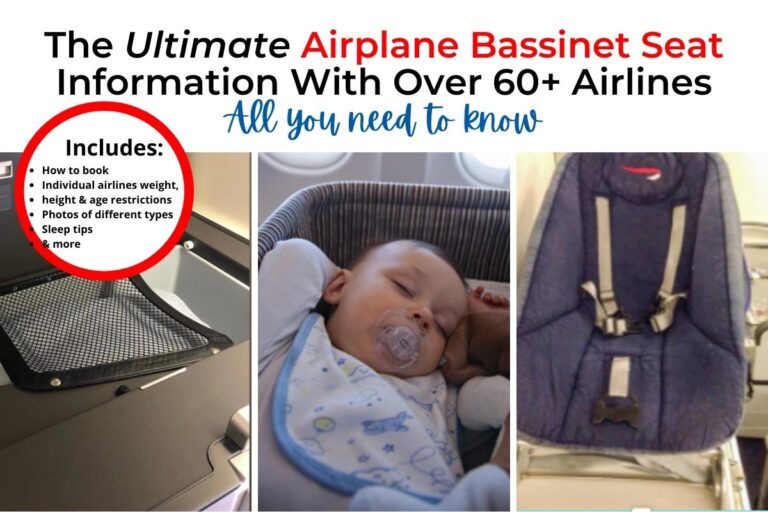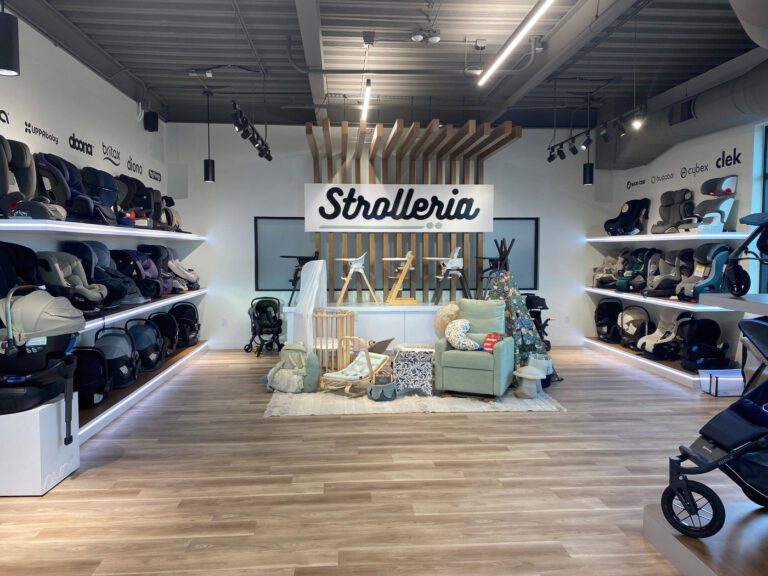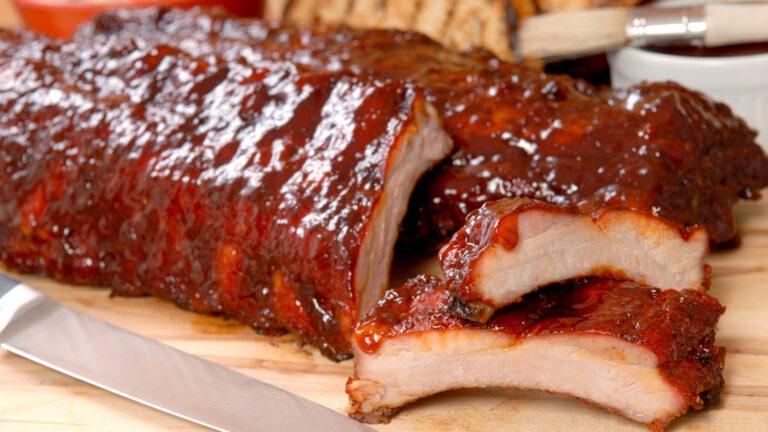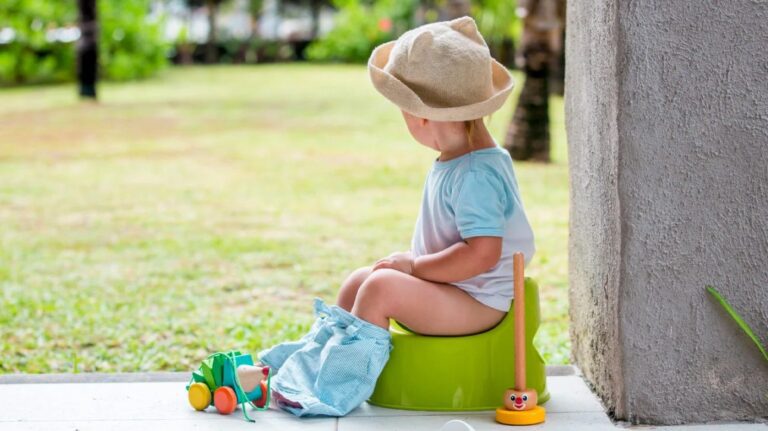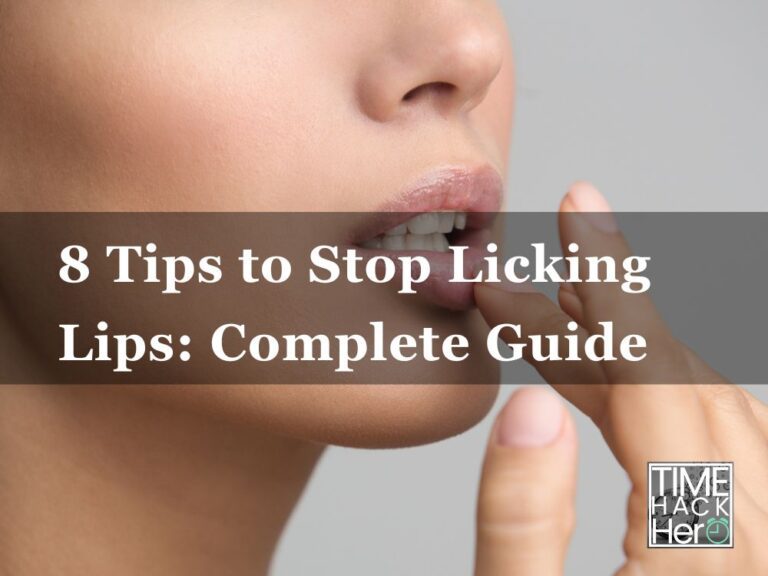How Many Newborn Nappies Do I Need: The Ultimate Guide
For a newborn, it is recommended to have around 10 to 12 nappies per day. Preparing for a newborn comes with a lot of responsibilities, and one important aspect is having an adequate supply of nappies.
Knowing how many nappies you will need can help you plan and prepare in advance. A newborn typically needs to be changed every one to three hours, and they can also have multiple bowel movements in a day. It is always better to be prepared with extra nappies, as you can’t always predict when your baby will need a change.
By having around 10 to 12 nappies per day, you can ensure that you have enough to meet your baby’s needs and avoid running out.
Factors To Consider Before Buying Newborn Nappies
Before buying newborn nappies, consider how many you will need. It is recommended to have a week’s supply, which typically amounts to about 70 diapers per week.
Baby’s Average Diaper Usage Per Day
One of the most important factors to consider before buying newborn nappies is your baby’s average diaper usage per day. Every baby is different, and their diaper needs can vary based on factors such as their feeding habits and metabolism. On average, newborn babies will go through about 10 to 12 diapers per day. This includes both wet and soiled diapers.
Age And Weight Of The Newborn
The age and weight of your newborn are crucial factors to consider when determining how many newborn nappies you will need. Newborn-sized diapers are specifically designed for babies weighing between 5 to 10 pounds. These diapers have a smaller size and a fit that is suitable for the delicate body of a newborn.
If your baby is on the smaller side or premature, you may need to consider using preemie-sized diapers until they reach the suitable weight range for newborn-sized diapers. On the other hand, if your baby is larger than average, you might need to skip newborn-sized diapers altogether and opt for size 1 diapers instead.
Duration Of The Newborn Stage
The duration of the newborn stage is another important factor to consider when buying newborn nappies. Most babies stay in the newborn-sized diapers for around 4 to 6 weeks, depending on their growth rate. After that, they will move on to the next diaper size.
It’s essential to keep in mind that it’s better to have a surplus of newborn-sized diapers rather than running out before your baby transitions to the next size. Babies can sometimes experience growth spurts, which may require additional time in newborn-sized diapers.
To get an estimate of how many newborn nappies you may need, consider that the average newborn stage lasts for about a month and calculate based on the average number of diapers used per day.
Conclusion
In conclusion, when it comes to buying newborn nappies, it’s crucial to consider factors such as your baby’s average diaper usage per day, their age and weight, and the duration of the newborn stage. By taking these factors into account, you can ensure that you have an adequate supply of newborn nappies to keep your baby clean, comfortable, and dry.
Different Types Of Newborn Nappies Explained
When it comes to choosing newborn nappies, there are several options available in the market. Understanding the different types can help you make an informed decision based on your preferences and needs. In this section, we will explain the three main types of newborn nappies: disposable nappies, cloth nappies, and hybrid nappies.
Disposable Nappies
Disposable nappies are the most commonly used type of nappies by parents due to their convenience and ease of use. These nappies are made of an absorbent material wrapped in a plastic outer layer, which helps prevent leaks. They are available in various sizes to fit your baby’s weight and age. Disposable nappies are designed for one-time use and can simply be thrown away after each change. They are a popular choice for parents who prioritize convenience and prefer the convenience of disposable nappies.
Cloth Nappies
Cloth nappies, also known as reusable nappies, have been gaining popularity among environmentally conscious parents. These nappies are made of fabric materials such as cotton, bamboo, or microfiber, and are designed to be washed and reused multiple times. Cloth nappies offer benefits such as reduced waste and potential cost savings over time. They are available in various styles, including flat nappies, prefolds, and fitted nappies. Cloth nappies require regular washing and drying, so it’s important to have an adequate supply on hand to keep up with changing needs.
Hybrid Nappies
Hybrid nappies offer the best of both worlds, combining the convenience of disposable nappies with the eco-friendly benefits of cloth nappies. These nappies consist of a reusable cloth outer shell and a disposable absorbent insert. The cloth shell can be used multiple times, while the insert can be disposed of after each change. Hybrid nappies are a popular choice for parents who want to minimize waste while still enjoying the convenience of disposable nappies when needed. They are available in a variety of sizes and styles to suit your baby’s needs.
Each type of newborn nappy has its own advantages and considerations. When choosing the right nappy for your baby, consider factors such as convenience, cost, environmental impact, and comfort. By understanding the different types of newborn nappies available, you can make an informed decision that aligns with your preferences and values.
Pros And Cons Of Disposable Newborn Nappies
When it comes to choosing the right nappies for your newborn, there are several options available in the market. One popular choice among parents is disposable newborn nappies. While these nappies offer convenience and easy use, they also come with their fair share of pros and cons. In this article, we will dive into the pros and cons of disposable newborn nappies, exploring factors such as convenience, environmental impact, and cost-effectiveness.
Convenience And Ease Of Use
Disposable newborn nappies are widely recognized for their convenient and easy-to-use nature. When you have a newborn baby, convenience becomes a top priority, and disposable nappies offer just that. These nappies are readily available in various sizes, allowing you to find the perfect fit for your little one. With easy-to-use tabs or adhesive strips, you can quickly secure the nappy in place, ensuring a snug and comfortable fit. Additionally, disposable nappies are designed to be highly absorbent, reducing the chances of leaks or messes, and saving you valuable time and effort.
Environmental Impact
While disposable newborn nappies may offer convenience, it is important to consider their environmental impact. These nappies are typically made from non-biodegradable materials, such as plastic and synthetic fibers, which can take hundreds of years to decompose in landfills. The production and disposal of disposable nappies contribute to the growing issue of waste and pollution. However, it is worth noting that some brands now offer eco-friendly options, made from sustainable materials and featuring biodegradable components. If you are concerned about the environmental impact, it is recommended to explore these alternatives.
Cost-effectiveness
Another factor to consider when evaluating disposable newborn nappies is their cost-effectiveness. Disposable nappies are generally more expensive compared to cloth nappies in the long run. However, they do offer convenience and time-saving benefits, which can outweigh the higher cost for some parents. It is essential to calculate your budget and consider your individual needs to determine whether disposable nappies are the right choice for you. Keep in mind that the number of nappies you will need per day will depend on your baby’s age, metabolism, and individual factors.
In conclusion, disposable newborn nappies come with pros and cons, offering convenience and ease of use while presenting environmental concerns and potential higher costs. When making the decision, consider your priorities and values as a parent, weighing the benefits and drawbacks. Remember, every baby is unique, and what works for one may not work for another. Ultimately, finding the right nappies for your newborn is about finding a balance that aligns with your lifestyle and values.

Credit: littlelamb.com
Pros And Cons Of Cloth Newborn Nappies
When it comes to choosing newborn nappies, parents have two main options: disposable or cloth. While disposable nappies are the more popular choice due to their convenience, cloth nappies offer several advantages that make them worth considering. In this section, we will explore the pros and cons of cloth newborn nappies in more detail.
Eco-friendly Option
Cloth newborn nappies are an eco-friendly choice for parents who are concerned about their environmental impact. Unlike disposable nappies, which take hundreds of years to decompose in landfills, cloth nappies can be reused and are therefore more sustainable. By choosing cloth nappies, you can significantly reduce the amount of waste going into the landfill, making a positive contribution to the environment.
Upfront Cost And Maintenance
One of the main concerns parents have when considering cloth nappies is the upfront cost and maintenance. While it is true that cloth nappies require an initial investment, which includes purchasing the nappies themselves and any necessary accessories, such as liners and covers, they can save you money in the long run. Unlike disposable nappies that need to be purchased regularly, cloth nappies can be reused for multiple children, making them more cost-effective over time. Additionally, with advances in design and materials, cloth nappies now come with various convenient features, such as adjustable sizing and easy-to-clean fabrics, making their maintenance easier than ever before.
Health Benefits For The Baby
Aside from their positive impact on the environment and your wallet, cloth newborn nappies also offer several health benefits for your baby. One of the main advantages of cloth nappies is that they are free from the chemicals and synthetic materials often found in disposable nappies. This means that your baby’s delicate skin is less likely to experience irritation, rashes, and allergies. Cloth nappies also provide better airflow, which can reduce the likelihood of diaper rash and keep your baby’s skin dry and comfortable.
Determining The Quantity Of Newborn Nappies Needed
To determine how many newborn nappies you need, consider stocking up for a week and calculating your baby’s daily usage. It’s important to have an appropriate supply to ensure you’re prepared for your baby’s needs.
Calculating The Number Of Nappies Per Day
When it comes to determining how many newborn nappies you will need, calculating the number of nappies per day is a good place to start. Newborns tend to go through a lot of nappies as they have frequent bowel movements and pee more frequently. On average, a newborn baby may require around 8 to 12 nappy changes per day. However, every baby is unique, and some may require more or fewer changes.
Estimating The Weekly And Monthly Usage
To get a clearer idea of how many newborn nappies you should stock up on, it’s helpful to estimate the weekly and monthly usage. Assuming an average of 10 nappy changes per day, you would need approximately 70 nappies per week and around 300 nappies per month. However, keep in mind that this is just an estimate, and your baby’s individual needs may vary.
Factors To Consider For Stockpiling
Stockpiling newborn nappies can be a smart move, as it ensures you won’t run out of supply during those early days. When deciding how many nappies to stockpile, take into account a few factors:
- The availability of a nearby store that sells newborn nappies, in case you run out unexpectedly.
- Your anticipated budget for purchasing nappies. Bulk buying may be cheaper, but make sure you have the storage space.
- The size and weight of your baby. Newborns tend to outgrow the smallest nappy sizes quickly, so buying a large number of newborn-sized nappies may not be cost-effective.
- Your preference for disposable or cloth nappies. If you choose disposable nappies, you’ll need to consider the cost and environmental impact of using them in large quantities.
By considering these factors and estimating the number of nappies per day, week, and month, you can determine how many newborn nappies you should have on hand to meet your baby’s needs. Remember, it’s always better to have a little extra than not enough, especially during those unpredictable newborn days.
Choosing The Right Size And Fit For Newborn Nappies
Choosing the right size and fit for newborn nappies is crucial. Determine the number of newborn nappies you need by calculating how many per day and per week, ensuring that you have enough to keep your baby comfortable and dry.
Understanding Nappy Sizes And Weight Ranges
Choosing the right size and fit for newborn nappies is crucial for ensuring your baby stays comfortable and protected. To determine the appropriate size, you must first understand nappy sizes and weight ranges. Each brand may have slightly different size charts, so it’s essential to refer to the manufacturer’s guidelines. Typically, newborn nappies are designed for babies up to 10 pounds or 4.5 kilograms.
Differentiating Between One Size And Newborn Nappies
When selecting newborn nappies, you may come across options like one size or newborn-specific nappies. Here’s how to differentiate between the two:
- One Size Nappies: These nappies are designed to fit babies from birth to potty training. They usually have multiple rows of snaps or adjustable elastics to achieve a perfect fit as your baby grows.
- Newborn Nappies: As the name suggests, these nappies are specifically designed for newborns. They are smaller in size and have a more snug fit to cater to the needs of your little one during the early weeks or months.
Tips For Selecting The Appropriate Size
Choosing the right size of newborn nappies is crucial to prevent leaks and ensure maximum comfort for your baby. Here are some tips to help you select the appropriate size:
- Refer to the Weight Range: Look for nappies that are suitable for your baby’s weight range. Manufacturers usually provide weight guidelines on their packaging or websites.
- Consider Your Baby’s Build: Take into account your baby’s body proportions when selecting nappy sizes. If your baby has chunky thighs, you may need nappies with wider leg openings or adjustable leg elastics.
- Read Reviews: Before purchasing a particular brand or size, read online reviews to see if other parents have had success with the fit and absorbency of the nappies.
- Try Sampler Packs: Some brands offer sampler packs that include a variety of sizes. This allows you to test different sizes and find the one that fits your baby the best before committing to a larger pack.
By understanding nappy sizes and weight ranges, differentiating between one size and newborn nappies, and following these tips for selecting the appropriate size, you can ensure your baby enjoys a comfortable and leak-free nappy experience.
Essential Newborn Nappy Accessories
When it comes to preparing for the arrival of your newborn, having the right nappy accessories is essential. These accessories not only make your diaper changing routine more convenient but also help to keep your little one comfortable and rash-free. In this article, we will cover the must-have accessories for your newborn’s nappies.
Diaper Rash Creams And Ointments
Baby’s delicate skin is prone to diaper rashes, which can cause discomfort and irritation. To prevent and treat diaper rashes, it’s important to have a good quality diaper rash cream or ointment on hand. These creams create a protective barrier on your baby’s skin, keeping it moisturized and preventing irritation from wetness or friction. Look for products that are gentle, hypoallergenic, and free from harmful chemicals.
Wet Wipes Or Cloth Wipes
Cleaning your baby’s bottom is an important part of diaper changing. While some parents prefer to use disposable wet wipes for convenience, others opt for cloth wipes for a more eco-friendly approach. Regardless of your choice, having a stash of wipes is essential. Look for wipes that are gentle on your baby’s skin, fragrance-free, and alcohol-free. It’s also a good idea to have a wipe warmer to keep the wipes comfortably warm and prevent any shocking cold sensations for your little one, especially during nighttime diaper changes.
Diaper Pail Or Storage Containers
Properly storing dirty diapers is crucial to maintain a clean and odor-free environment. You can invest in a diaper pail specifically designed for this purpose or use storage containers with tight-fitting lids. Diaper pails are typically equipped with odor-locking technology, keeping unpleasant smells at bay. Whichever option you choose, make sure to regularly empty and clean the container to maintain hygiene.
– Diaper rash creams and ointments: Prevent and treat diaper rashes with gentle, hypoallergenic creams that create a protective barrier on your baby’s delicate skin. – Wet wipes or cloth wipes: Keep your baby’s bottom clean and fresh with fragrance-free and alcohol-free wipes. Consider a wipe warmer for added comfort during diaper changes. – Diaper pail or storage containers: Properly store dirty diapers in a diaper pail or storage container with a tight-fitting lid to prevent odors and maintain a clean environment. Remember, having these essential newborn nappy accessories on hand will make your diaper changing routine a breeze and ensure your little one stays comfortable and happy.Proper Hygiene And Changing Techniques For Newborn Nappies
Ensuring proper hygiene for your newborn is essential, including knowing how many nappies you’ll need. Stock up on a sufficient supply of newborn nappies to keep your little one clean and comfortable throughout the day.
How Often To Change Newborn Nappies
Keeping your baby’s nappy clean and dry is crucial for maintaining proper hygiene. Newborns typically require more frequent nappy changes compared to older babies. On average, you should aim to change your newborn’s nappy every 2 to 3 hours, or whenever it gets soiled.
It’s important to check for signs of discomfort or excessive wetness, as these may indicate the need for a nappy change even before the 2 to 3-hour mark. By staying vigilant and responding promptly, you can help prevent nappy rash and keep your baby comfortable.
Proper Cleaning And Disposal Methods
When it comes to cleaning newborn nappies, it’s essential to follow proper steps to maintain hygiene and prevent the spread of bacteria. Here’s a step-by-step guide:
- Start by laying your baby on a clean and safe surface. Keep all the necessary supplies within reach, such as fresh nappies, baby wipes, and a nappy bin.
- Remove the dirty nappy by gently lifting your baby’s legs and sliding the nappy out from underneath. Be careful not to get any soiled areas on your baby’s skin or clothing.
- Use baby wipes or a damp cloth to clean your baby’s bottom thoroughly. Wipe from front to back to prevent the spread of bacteria.
- Let your baby’s skin air dry for a few moments, or you can pat it gently with a clean cloth. Avoid rubbing, as this can cause irritation.
- Place a fresh nappy under your baby’s bottom, making sure it covers the entire area. Secure the tabs snugly but not too tight.
- Dispose of the dirty nappy in a sealed nappy bin to contain any odors and prevent potential contamination.
Handling Nappy Leaks And Blowouts
Nappy leaks and blowouts can be a common occurrence with newborns. To minimize the mess and keep your baby clean, follow these tips:
- Choose nappies with a good fit. Make sure the leg cuffs and waistband are snug enough to prevent leaks.
- Consider using nappy boosters or inserts to add extra absorbency, especially during longer periods or overnight.
- Change your baby’s nappy promptly after every bowel movement to reduce the risk of blowouts.
- For nappy leaks or blowouts, gently lift your baby and clean the affected areas using baby wipes or a damp cloth.
- If the leaks persist, try adjusting the nappy fit or consider sizing up to a larger nappy.
By following proper hygiene and changing techniques, you can ensure your newborn stays clean, dry, and comfortable. Remember to check your baby’s nappy frequently, clean thoroughly using appropriate methods, and address any leaks or blowouts promptly. Maintaining good nappy hygiene is essential for your baby’s overall well-being.
Troubleshooting Common Newborn Nappy Issues
When it comes to using newborn nappies, it’s not uncommon to encounter a few hiccups along the way. From diaper rash to leakages and fit problems, and even sensitivity or allergies, it’s essential to troubleshoot these common issues to ensure your little one stays comfortable and happy. In this section, we will discuss some effective strategies for diaper rash prevention and treatment, dealing with leakages and fit problems, and addressing sensitivity or allergies.
Diaper Rash Prevention And Treatment
Diaper rash is a common concern among newborns, but with the right preventive measures and treatment, you can keep your baby’s skin healthy and rash-free. Here are some tips to help prevent and treat diaper rash:
- Change diapers frequently: Keep an eye on your baby’s diaper and change it as soon as it becomes wet or soiled. This helps to prevent prolonged exposure to moisture and bacteria.
- Use a barrier cream: Apply a thin layer of diaper cream or ointment with zinc oxide to protect your baby’s skin from moisture and irritation.
- Avoid irritants: Choose nappies made from soft, breathable materials that are gentle on your baby’s delicate skin. Avoid using scented wipes, as they may contain irritants that can worsen diaper rash.
- Allow for diaper-free time: Give your baby some diaper-free time to allow their skin to breathe and reduce moisture buildup.
Dealing With Leakages And Fit Problems
One of the most frustrating issues you may encounter with newborn nappies is leakages and fit problems. Here’s how you can tackle these problems:
- Check the diaper size: Ensure that you are using the correct size of nappy for your baby’s weight. Using a size that is too big or too small can result in leakages and discomfort.
- Proper positioning: Make sure the diaper is properly positioned and snugly fastened around your baby’s waist and legs. Adjust the tabs or snaps to achieve a secure fit.
- Double up on protection: To minimize the risk of leaks, consider using diaper liners or inserts for added absorbency. These can be especially helpful for nighttime or naptime use.
- Try a different brand: If you continue to experience leakages and fit problems, it may be worth trying a different brand of nappies. Every baby is unique, and what works for one may not work for another.
Addressing Sensitivity Or Allergies
If your baby shows signs of sensitivity or allergies to certain nappy materials or ingredients, it’s important to take appropriate steps to address these issues. Here’s what you can do:
- Switch to hypoallergenic options: Look for nappies specifically designed for sensitive skin or labeled as hypoallergenic. These are made from gentle materials and are less likely to cause irritation or allergic reactions.
- Read labels carefully: Pay attention to the ingredients used in nappies and avoid those that your baby may be allergic to. Common allergens include fragrances, latex, and certain chemicals.
- Consult a healthcare professional: If your baby continues to experience sensitivity or allergic reactions despite using hypoallergenic nappies, it’s best to consult a healthcare professional for further guidance and recommendations.
By implementing these troubleshooting strategies, you can overcome common newborn nappy issues and ensure your baby stays comfortable, dry, and rash-free. Remember, every baby is different, so don’t hesitate to experiment with different approaches until you find what works best for your little one.
Newborn Nappy Brands And Product Recommendations
When it comes to newborn nappies, there are several reputable brands to consider. Each brand offers different features and benefits, so it’s important to find the one that suits your baby’s needs and preferences. Here are a few highly recommended newborn nappy brands:
Pampers
Pampers is a well-known brand that offers a wide range of nappies for newborns. Their Swaddlers line is especially popular, as they are designed to be soft and gentle on baby’s delicate skin. Pampers Baby-Dry Diapers are also a great option for overnight use, as they provide up to 12 hours of protection against leaks. For eco-conscious parents, Pampers also offers their Pure Protection line, which is made without chlorine bleaching, fragrance, parabens, and latex.
Huggies
Huggies is another trusted brand that offers a variety of nappy options for newborns. Their nappies are known for their excellent absorbency and leak protection. Huggies also offers a Newborn line that is specially designed to fit snugly around baby’s delicate belly button area without causing any discomfort. Many parents also prefer Huggies for their affordability and availability.
Coterie
Coterie is a relatively new brand in the market, but it has quickly gained popularity for its ultra-soft and hypoallergenic nappies. Coterie Ultra Soft Diapers are made with premium materials that are gentle on baby’s skin while providing excellent leakage protection. They also offer a convenient One Month Diaper Supply option, which reduces the hassle of frequently restocking nappies.
Bambo Nature
Bambo Nature is a brand that focuses on creating sustainable and eco-friendly nappies. Their nappies are made with high-quality, plant-based materials that are free from harmful chemicals and allergens. Bambo Nature nappies are also known for their excellent absorbency and softness. They are a great choice for parents who prioritize both their baby’s well-being and the environment.
Hello Bello
Hello Bello is a brand co-founded by actors Kristen Bell and Dax Shepard. Their nappies are made with plant-based materials and are hypoallergenic, making them safe for sensitive skin. Hello Bello nappies also come in adorable prints, adding a touch of fun to diaper changes. They are not only gentle on the baby but also affordable, making them a popular choice among parents.
In conclusion, there are several trusted and highly recommended brands when it comes to newborn nappies. Whether you prioritize softness, leak protection, sustainability, or affordability, these brands offer a variety of options to suit your needs and preferences.
Frequently Asked Questions Of How Many Newborn Nappies Do I Need
How Many Boxes Of Nappies Do I Need For My Newborn?
For a newborn, it is recommended to have at least 7-10 boxes of nappies per month.
How Many Newborn Diapers Should I Buy?
For newborn diapers, it’s recommended to buy around 10-12 diapers per day. Newborns typically go through about 8-10 diaper changes daily. It’s better to have a few extra on hand to avoid running out. Remember, every baby is different, so adjust accordingly based on your baby’s needs.
How Many Pee Nappies Should A Newborn Have?
A newborn needs to have at least one pee nappy every one to three hours, but it can vary. They may also have multiple bowel movements in a day.
How Long Do Newborn Nappies Last?
Newborn nappies typically last for about one to three hours before needing to be changed. Babies may also have multiple bowel movements throughout the day, so it is important to have an adequate supply of newborn nappies on hand.
Conclusion
To ensure you’re fully prepared for your newborn’s arrival, it’s important to know how many nappies you’ll need. Newborns typically require around 8 to 12 nappy changes each day, so having an ample supply is essential. Consider starting with a minimum of 60 nappies for the first week, as this will give you a good starting point.
Keep in mind that every baby is different, and their needs may vary. By having enough newborn nappies on hand, you can focus on enjoying those precious moments with your little one without any worry.



